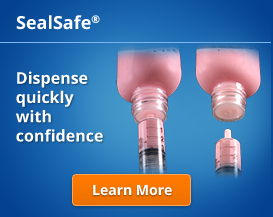Home > News and Events > How to Use a Hydrometer
How to Use a Hydrometer
Sunday, April 7, 2019
Hydrometers
A hydrometer is an instrument used to measure specific gravity or relative density of liquids. It takes the form of cylindrical glass or plastic with a bulb-shaped end. A printed scale calibrated to a specific gravity can be found on its stem while the end is weighted with lead shot or steel shot to keep the hydrometer upright in liquid. To measure specific gravity, the hydrometer is placed within a glass or plastic hydrometer jar filled with the liquid sample. The level of the sample liquid in the jar that aligns with a point on the hydrometer scale indicates its specific gravity value.
A standard hydrometer scale, also known as the specific gravity scale, divides liquids into two general classes: liquids heavier than water and liquids lighter than water. The specific gravity of distilled water, which equals 1.000, is set as the initial point of measurement. Liquids lighter than water are scaled below 1.000 specific gravity, and liquids heavier than water are scaled above 1.000 specific gravity. A hydrometer can also be calibrated to Brine, Baume, Brix, Alcohol, American Petroleum Institute Index (API) for measurement of specific chemicals.
Reading a Hydrometer
1. Fill a clean and dry hydrometer jar with a portion of the thoroughly mixed liquid sample.
2. Place the hydrometer inside the jar and twirl it slightly to dislodge any air bubbles.
3. To ensure accuracy, the temperature of the sample liquid should be at 60°F. In case the sample liquid cannot adhere to the standard temperature, adjust the measurement with a correction table.
4. Record the measurement at the point where the surface of the liquid crosses the hydrometer scale.
Salometers
A Salometer is a specific type of hydrometer used for measuring brine strength. The Salometer scale directly indicates the percent of saturation with the Salometer degree. When in pure water, the Salometer displays a reading of 0° and 100° in fully saturated brine. It is important to establish the percent value of fully saturated brine as the fundamental unit and then divide this percent into 100 parts before calibrating Salometer scales or computing brine tables.
The following formula ties together the Salometer degree and percent salt:
Degrees S = % salt - brine X 100
% salt - saturated brine
Reading a Salometer
1. Prepare a clean, straight-walled glass cylinder with a diameter twice the size of the Salometer bulb. Make sure that the cylinder is also tall enough to allow the Salometer to float at a 0° reading.
2. On a level surface, fill the cylinder with enough brine to raise the liquid level near the top of the cylinder after the Salometer is immersed.
3. Note down the brine temperature. Make sure that it is at 60°F. If not, apply temperature corrections to the reading.
4. Lower the Salometer into the brine, being careful that it stays afloat without touching the cylinder walls.
5. After the Salometer has stabilized, record the measurement at the point where the surface of the brine crosses the hydrometer scale.
Andwin Scientific supplies over a million laboratory equipment and supplies from a wide array of leading manufacturers. We also provide an extensive selection of hydrometers with scales including API, Baume, and Brix. To view our full list of hydrometer products, visit http://andwinsci.com/category/thermometers-hydrometers/hydrometers today.















